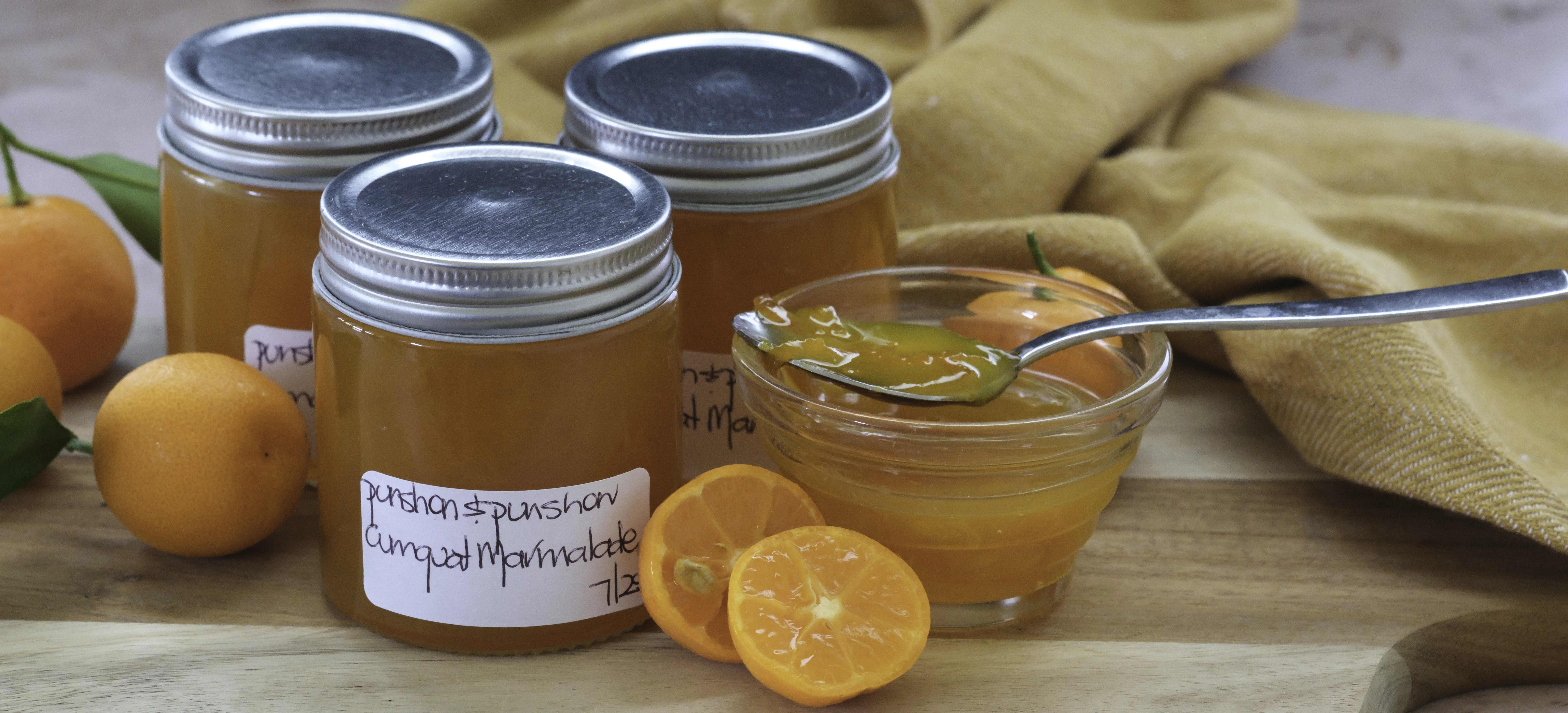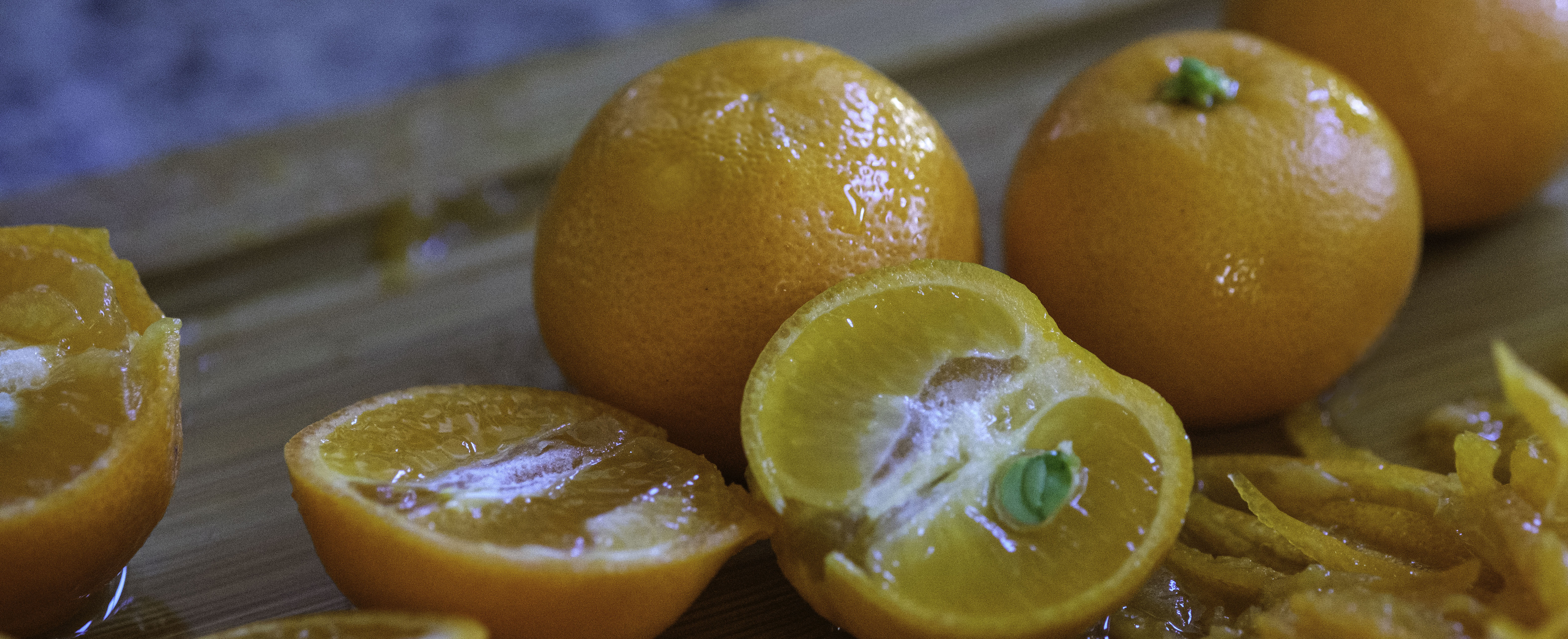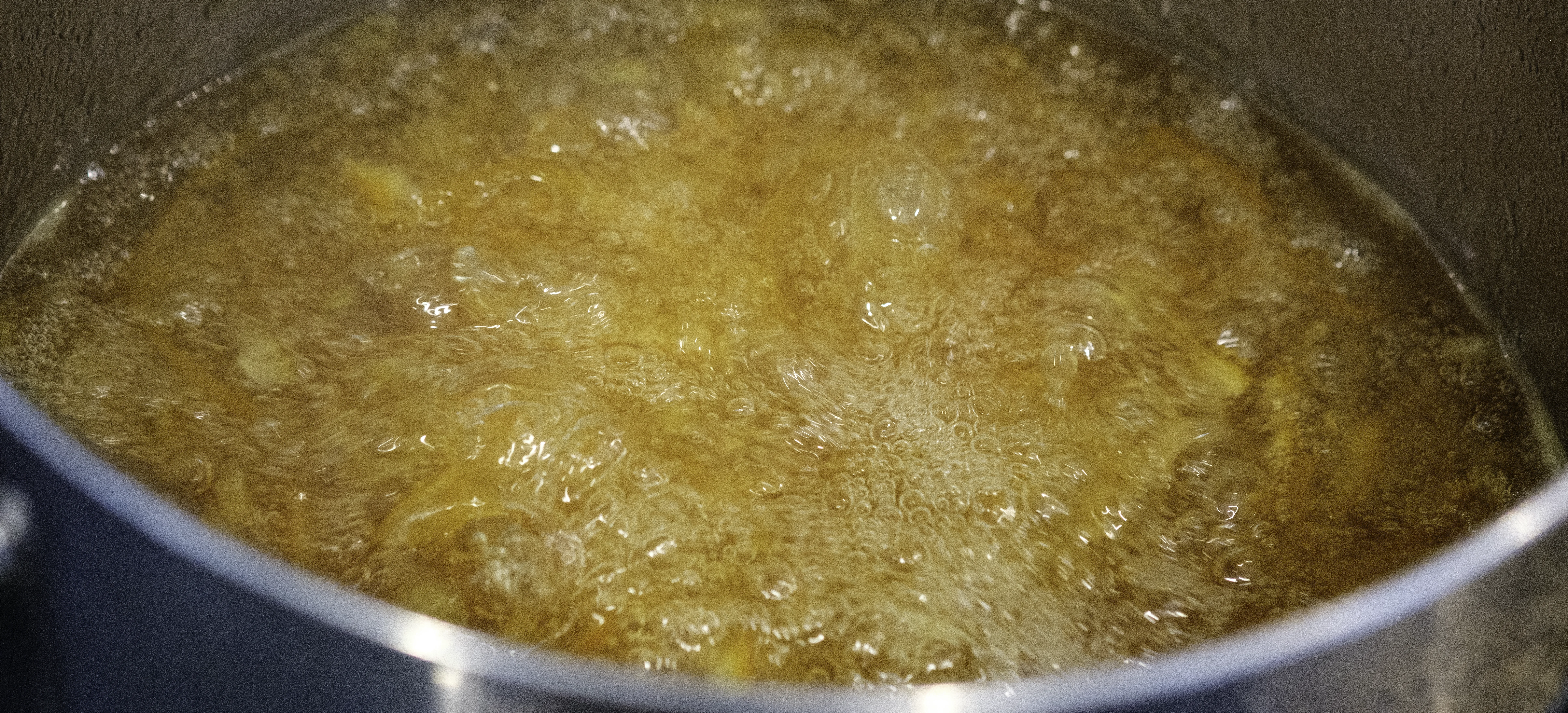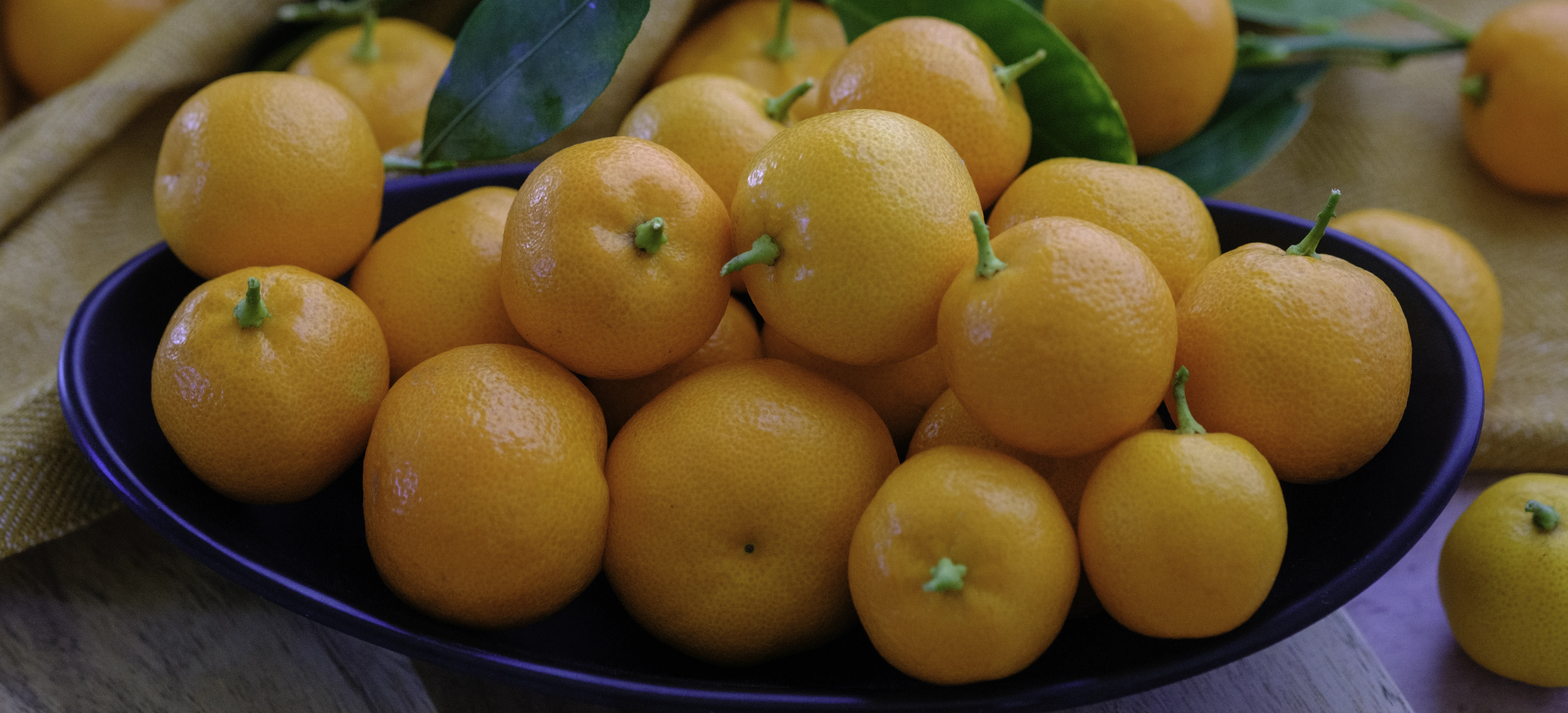Kumquat Marmalade
- Jams, Jellies & Marmalades

Kumquats are revered by marmalade aficionados, particularly the Nagami Oval variety. Its deep orange colour, aromatic flesh and sweet tangy rind makes a superlative preserve. Though kumquats take more time to prepare than the traditional citrus fruit varieties, the result is definitely worth it. Kumquat marmalade is the perfect breakfast spread and is a wonderful accompaniment to nutty cheese, chocolate, served with ice-cream, yogurt or cream and as a side for rich cakes and desserts that need some tang to offset their full luxurious flavour. Don’t be confused if you see it spelt cumquat – it’s the same fruit.
Looking to understand the remarkable story of marmalade? My article Marmalade - A Potted History of Culinary Conspiracy, traces its notable journey.
- Preparation Time:
- 30 minutes + overnight soaking
- Cooking Time:
- 45 minutes
- Quantity:
- 5 x 300 ml jars
PREPARATION
Sterilise glass jars and lids with a protective lining. Have the jars and lids dry, hot and ready for the bottling stage.
Warm sugar

INGREDIENTS
- 1 kg
- Kumquats
- 1250 ml
- Water
- 40 ml
- Lemon juice
- 1250g
- White sugar
- 5 g/knob
- Unsalted butter
METHOD
Wash the kumquats to remove any garden debris and dust. Cut in half, remove the pips and place them into muslin or calico and make a pectin bag. Refer to the Notes section: How to Make a Pectin Bag, if required.
Thinly slice the cumquats and place the fruit and any juice into a large bowl or stainless-steel preserving pot. Add the water, pectin bag and cover with a clean dry tea towel. Allow the ingredients to soak overnight.
The next day.
Place the mixture, lemon juice and pectin bag into a large preserving or stainless-steel pot, and simmer gently until the peel is soft. Refer the Notes Section: Cooked Peel Test below if required.
Wearing clean kitchen gloves, remove the pectin bag and squeeze to extract as much water and pectin from the pip mixture as possible. Discard the contents and wash the bag so it can be reused.
Add the knob of butter and warmed sugar, stirring continuously over a medium heat, until the sugar is dissolved. Bring to the boil quickly and boil rapidly for approximately 10 minutes. Then check to see if it has reached the Setting Point. If not, continue to boil vigorously and keep checking every 2 minutes, or thereabouts, until it reaches the setting point, using either the flake or wrinkle test, or until it reaches 105 C/220 F.
Remove from the heat and with a stainless-steel, or any other fine-edged spoon, skim the top of the marmalade to remove any scum that has accumulated during the cooking process. Allow to cool slightly, for approximately 5 minutes, then stir gently to distribute the peel evenly.
Using a funnel, pour into dry sterilised screw cap sealable bottles and fill to approximately 2.5cm (1 inch) from the top of the jar. Seal immediately with hot dry lids. The HHH method of HOT dry jars, HOT dry lids and HOT preserve creates a vacuum seal as it cools. The “popping” sound, often heard in the kitchen, signals a successfully vacuum sealed jar.
If there are no lids, seal with paraffin wax while the marmalade is hot, allow to cool, then cover with cellulose or plastic film and secure with a rubber band or kitchen twine. Refer to Sealing with Paraffin Wax, if required.
The HHH method of sealing is preferred as there is reduced risk of contamination prior to and after sealing.
Seal, label, and store in a cool dark place in the kitchen or pantry.
Allow the marmalade to mature for at least 2 weeks before eating.
NOTES
 Kumquat boiling vigorously to the setting point.
Kumquat boiling vigorously to the setting point. - To wash the fruit, I use a pair of Skrub’a gloves. A wonderful invention, they are made of a slightly course material that magically scrubs fruit and vegetables with the greatest of ease. Easy to wash and dry, they are an indispensable item in my kitchen. Special thanks to my dear friend Sue, who found them in a cookware shop. Alternatively, use a soft bristle vegetable/vegetable scrubbing brush.
- Use freshly picked citrus, where possible, as the pectin content is likely to be higher. Pectin is concentrated in the seeds, pith, peel, and cores of fruit. Don’t discard them. They are invaluable in jam and marmalade making as it is the ratio between the fruit acids, pectin and sugar that makes them set. My article What Makes Jam, Jelly & Marmalade Set, provides a detailed explanation.
- Use Good Quality Jars
- Good quality jars should be used in all preserving, particularly when they are processed in a hot water bath.
- Thin jars often cannot withstand the temperatures and may crack either in the bath or on and/or after removal. Avoid the disappointment and invest in some good jars from a homewares or preserves outlet.
- Select jars that have non-reactive lids as the vinegar solution can cause the lids to rust over time.
- To Make a Pectin Bag
- Drape clean sterilised calico or muslin cloth over a small bowl. Place the pith, pips, and fruit ends in the cloth.
- Gather up the ends and close the bag by tying it up with kitchen string.
- Allow room, between the tie point and fruit mass, so the water can bubble through the bag easily. This helps to extract as much pectin as possible from the mixture of pith, pips, and peels. It’s now ready to use.
- Once the bag has been removed from the preserving pan, remove the fruit mass and discard. Wash, dry and keep the cloth for the next batch.
- My tea towel draw has a range of different sized cloths that are on hand for my jam and marmalade experiments.
- If the fruit contains a lot of pith, only put a small amount in the pectin bag, otherwise the marmalade can take on a bitter taste.
- Cooked Peel Test
- To test if the peel is cooked, squeeze a piece between the thumb and finger; it should squeeze easily to a mush
- Warming the Sugar.
- To warm the sugar, place the recipe quantity in an oven proof container and place in a preheated 120 degrees C oven for approximately 10 minutes.
- The sugar should be warm to touch, not hot. Warmed sugar dissolves quickly and a rapid boil until the setting point is reached helps to preserve the fresh citrus flavour.
- Removing Stray Pips
- Any stray pips that managed to end up in the pot will rise and fall while the marmalade is boiling. As the cooking progresses, they will become increasingly darker, making them easier to see.
- Carefully remove so that they don’t end up in the jar.
- If you are entering your marmalade into any competitions, judges will mark your submission down if they are visible.
- Preserving Pans
- If you don’t have a preserving pan, use a large pot , preferably stainless steel.
- Ensure there is enough space available in the pot for the mixture to double in size while it is rapidly boiling.
- Cooking time approximation
- Cooking times are an approximation only. They are provided as guidelines as cooking times are influenced by the type of pot and its diameter and height, speed of cooking and fruit ripeness, size, and moisture level.
- Removing the Scum
- Jams, jellies and marmalades can produce a scum while boiling. Impurities from the fruit and sugar will rise to the surface and a fine frothy foam will move towards the edge of the preserving pan. Some fruits will produce more scum than others.
- This is a natural self-clarification process and makes the task of making a high-quality preserve easier. Removing the scum increases the preserve’s clarity. This is very important if it is being submitted for competition. Remove the scum before bottling. Using a stainless-steel spoon, skim the scum from around the edge of the preserving pan.
- Be careful to remove just the scum and not marmalade. This can be done while the preserve is boiling and/or once it has been taken off the heat.
- Do not attempt to remove the scum from the centre of a boiling pan, as there is a high risk it will splutter and hot preserve burns.
- Marmalade Mistakes and Remedies. My article: Marmalade Mistakes and Remedies provides an overview of what can go wrong and how to rectify mistakes.

‘A wise bear always keeps a marmalade sandwich in his hat in case of emergency’.
Paddington Bear
